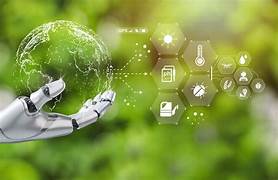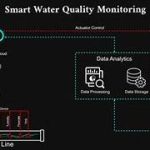Developing AI Tools for Real-Time Monitoring of Environmental Pollution
Introduction
Environmental pollution is a growing global concern, impacting air, water, and soil quality. Traditional pollution monitoring methods often rely on periodic sampling and manual data analysis, which can be slow and inefficient. Artificial Intelligence (AI) is transforming this field by enabling real-time pollution tracking, predictive analytics, and automated response mechanisms. This article explores how AI-powered tools are enhancing environmental pollution monitoring, their key applications, challenges, and future prospects.
The Role of AI in Environmental Pollution Monitoring
AI-driven systems leverage machine learning, computer vision, and IoT sensors to detect, analyze, and mitigate pollution in real time. These tools are revolutionizing environmental management through:
- Air Quality Monitoring: AI algorithms process data from satellite imagery and ground sensors to track air pollution levels.
- Water Pollution Detection: AI-powered analysis identifies contaminants in water bodies and predicts pollution trends.
- Soil Contamination Analysis: AI evaluates soil samples to detect harmful substances affecting agriculture and ecosystems.
- Predictive Analytics for Pollution Control: AI forecasts pollution patterns, enabling proactive regulatory measures.
AI Technologies in Environmental Pollution Monitoring
Several AI technologies are driving innovations in pollution monitoring and control:
1. Machine Learning (ML) Algorithms
ML algorithms analyze historical and real-time data to predict pollution trends and identify pollution sources. These models continuously improve by learning from new data, enhancing monitoring accuracy.
2. Computer Vision and Image Recognition
AI-powered image recognition systems use satellite imagery and drone surveillance to detect pollution sources, such as oil spills, illegal waste dumping, and deforestation. These systems enable:
- Real-time identification of environmental hazards.
- Tracking of industrial emissions and compliance violations.
- Enhanced monitoring of marine and freshwater pollution.
3. Internet of Things (IoT) and Smart Sensors
IoT sensors integrated with AI analyze environmental parameters such as air quality, water contamination, and noise pollution. These smart sensors facilitate:
- Continuous, real-time monitoring of pollution levels.
- Automated alerts for regulatory agencies and policymakers.
- Data-driven decision-making for pollution mitigation.
4. Predictive Analytics for Environmental Management
AI-driven predictive models assess pollution trends and provide early warnings for hazardous environmental conditions. These insights help governments and industries implement timely interventions to reduce pollution levels.
Benefits of AI in Environmental Pollution Monitoring
1. Real-Time Pollution Tracking
AI-powered tools enable continuous monitoring, providing real-time updates on pollution levels across different locations.
2. Improved Accuracy and Efficiency
AI enhances the precision of pollution measurements, reducing human errors and enabling automated data analysis.
3. Cost Savings
Automated monitoring reduces the need for extensive manual sampling and laboratory analysis, cutting costs for environmental agencies.
4. Proactive Environmental Protection
By predicting pollution trends, AI helps authorities take preventive measures to mitigate environmental damage before it escalates.
5. Enhanced Public Awareness
AI-powered apps and dashboards provide citizens with real-time pollution data, promoting eco-friendly behaviors and community engagement.
Challenges in AI-Based Pollution Monitoring
1. High Implementation Costs
Developing and deploying AI-driven pollution monitoring systems require significant investments in technology and infrastructure.
2. Data Limitations
AI algorithms depend on comprehensive and high-quality data, but gaps in environmental monitoring data can reduce accuracy.
3. Integration with Existing Systems
Many environmental agencies use outdated monitoring infrastructure, making AI integration challenging.
4. Ethical and Privacy Concerns
AI-driven surveillance for pollution monitoring may raise privacy concerns, particularly when tracking industrial emissions and urban pollution.
Future Prospects of AI in Pollution Monitoring
- AI-Enabled Smart Cities: AI will enhance urban pollution control by integrating with smart city infrastructure.
- Blockchain for Environmental Transparency: Blockchain technology can ensure transparency in pollution data and regulatory compliance.
- Advanced Drone Monitoring: AI-driven drones will enhance large-scale pollution tracking and enforcement.
- AI in Climate Change Mitigation: AI will play a crucial role in reducing greenhouse gas emissions and developing sustainable environmental policies.
Conclusion
AI is revolutionizing environmental pollution monitoring by enabling real-time tracking, predictive analysis, and automated responses. While challenges such as high costs and data limitations exist, ongoing advancements in AI and IoT technology will drive widespread adoption. By leveraging AI-powered pollution monitoring tools, governments, industries, and individuals can work together to protect the environment and ensure a sustainable future.


